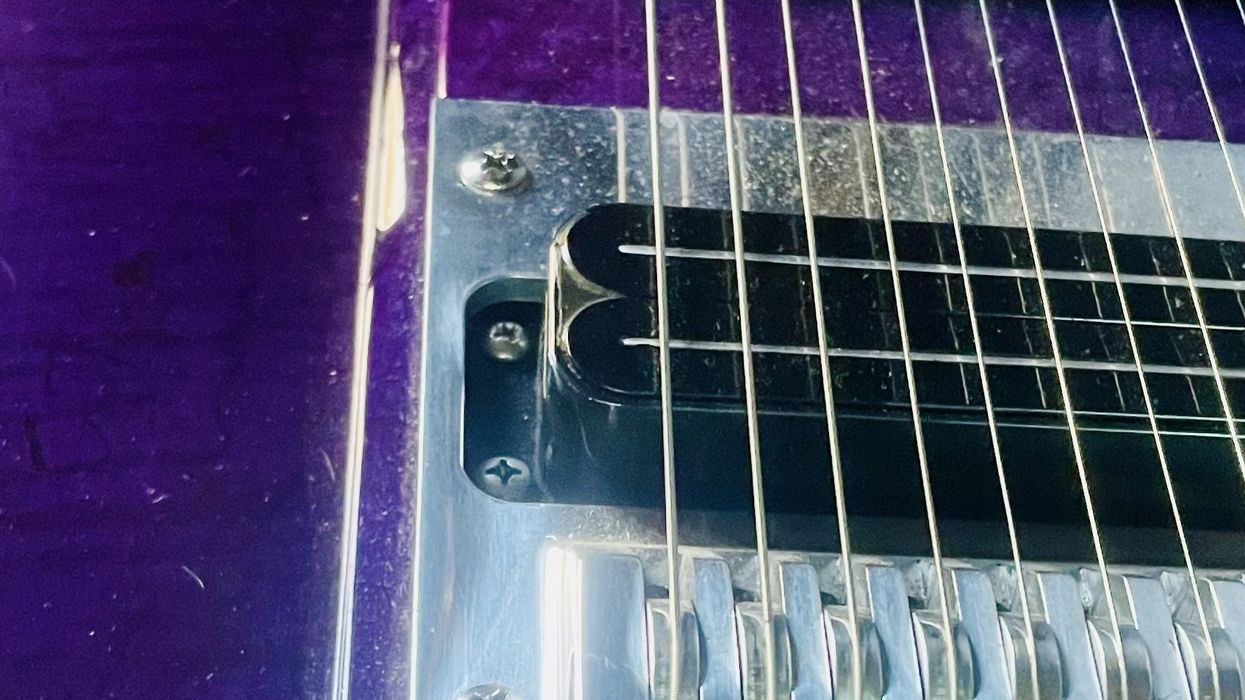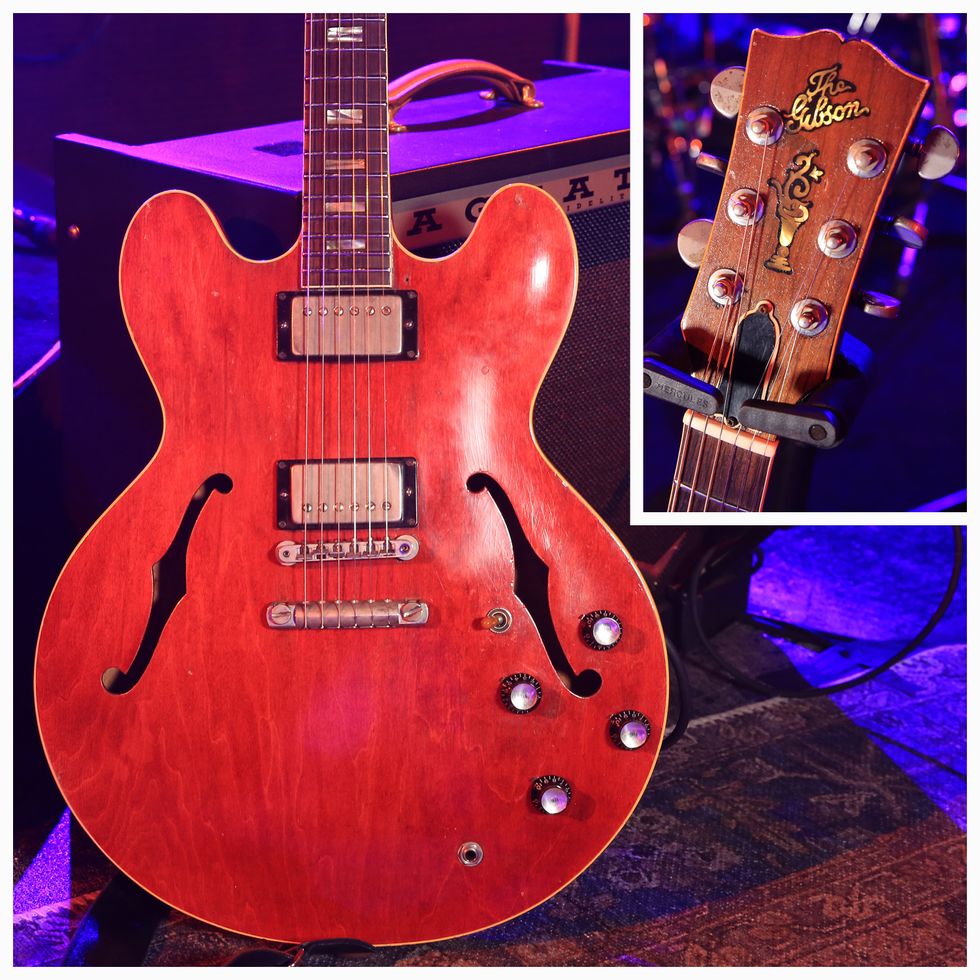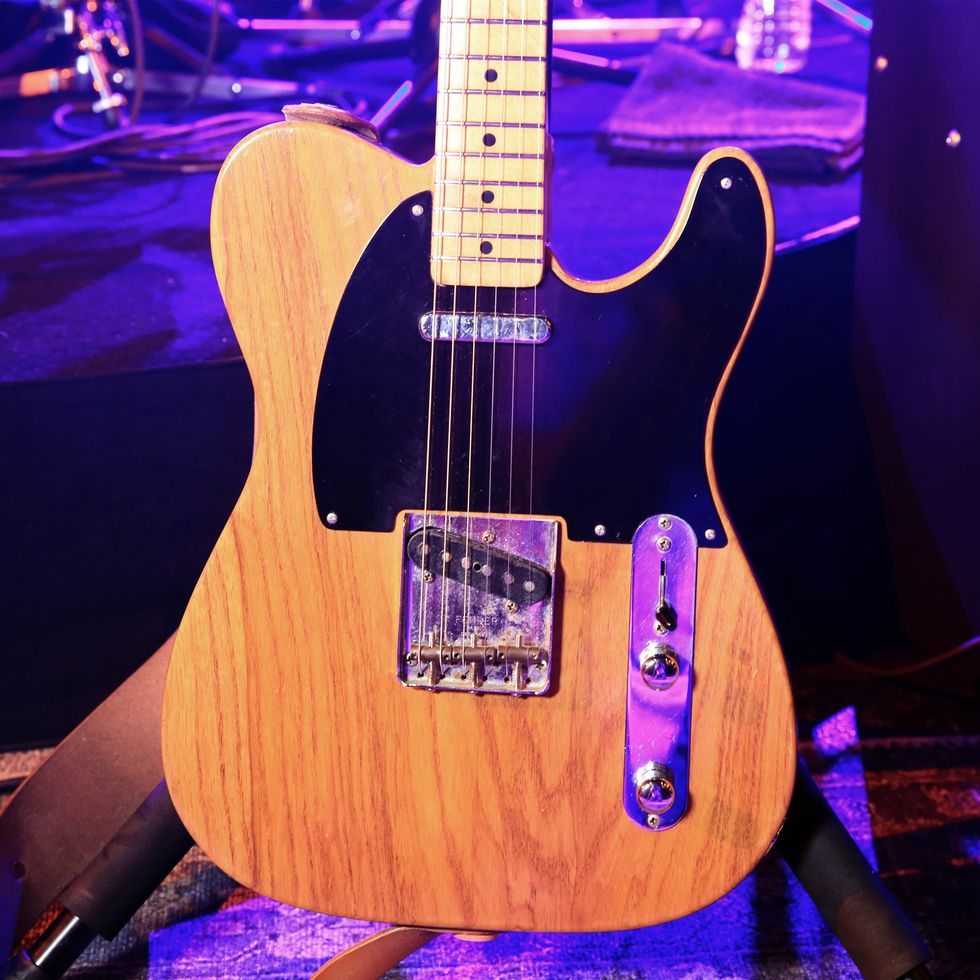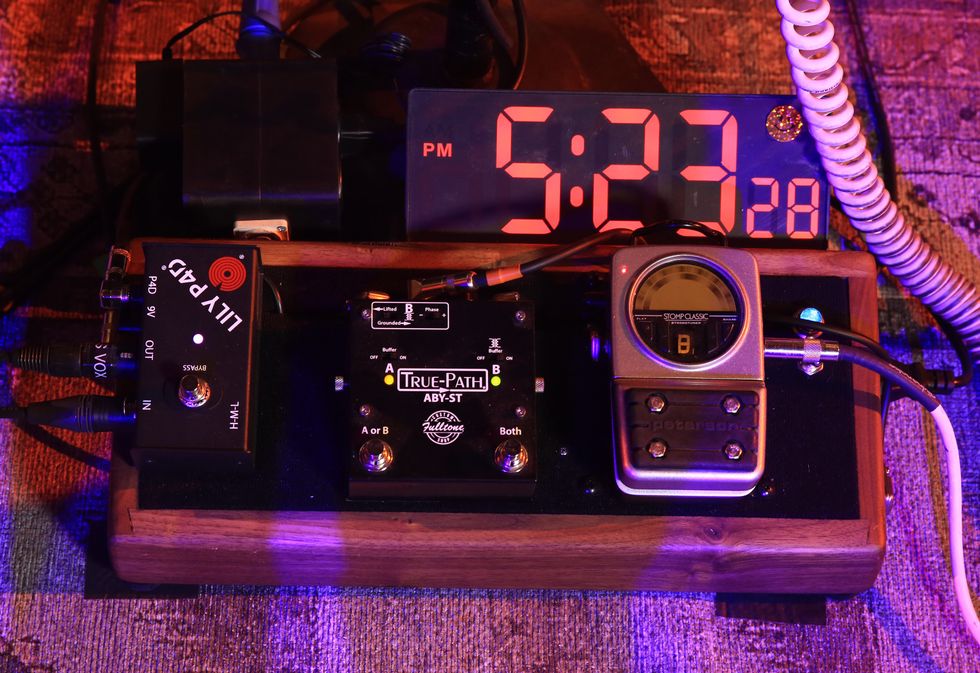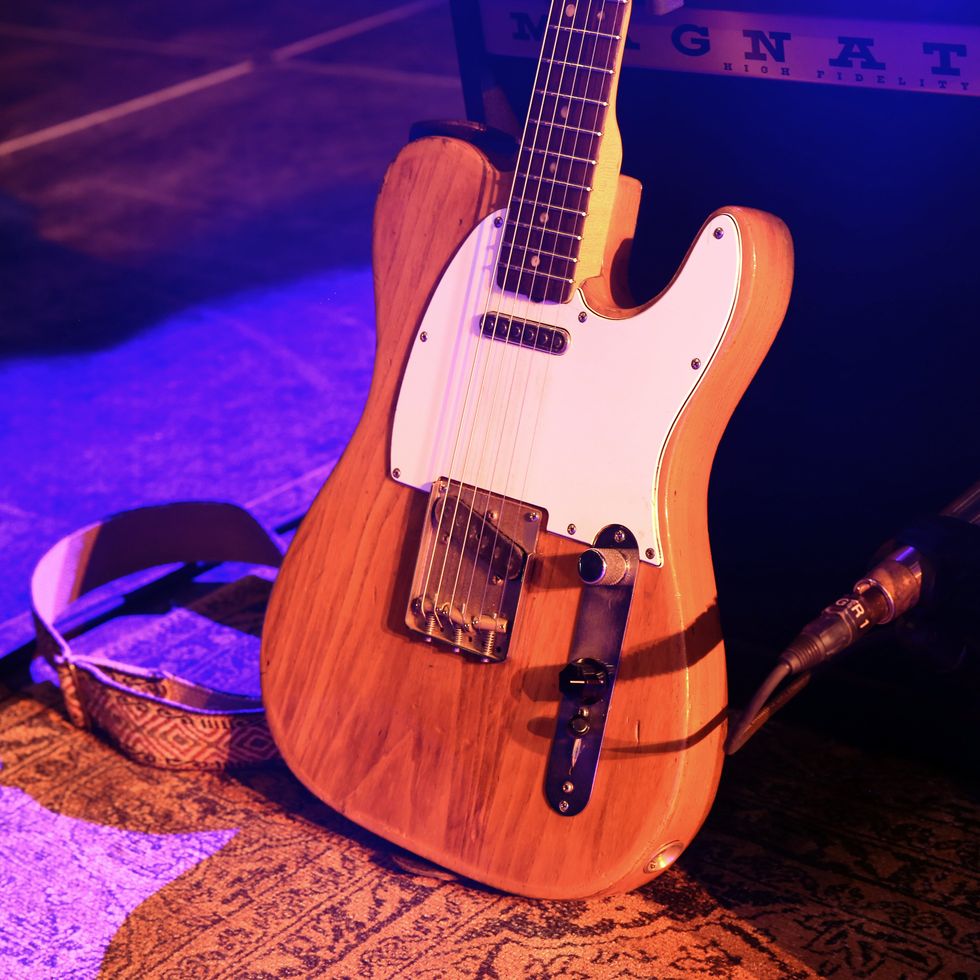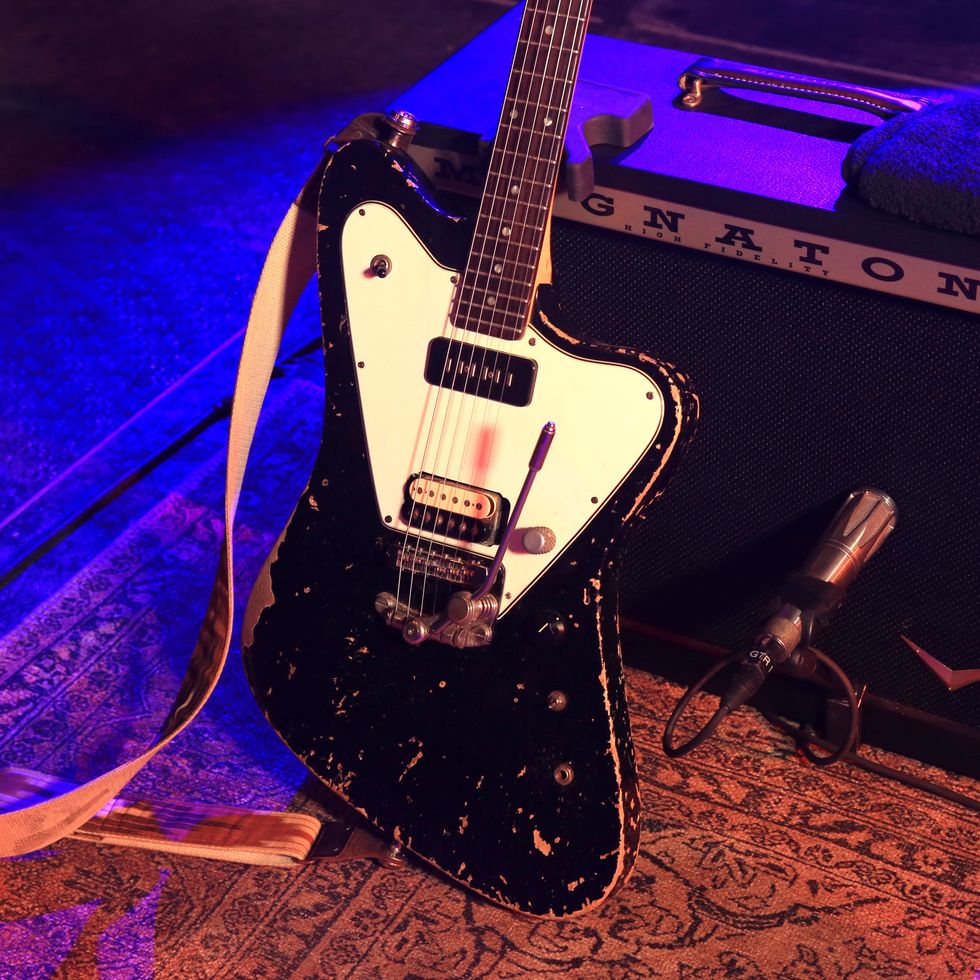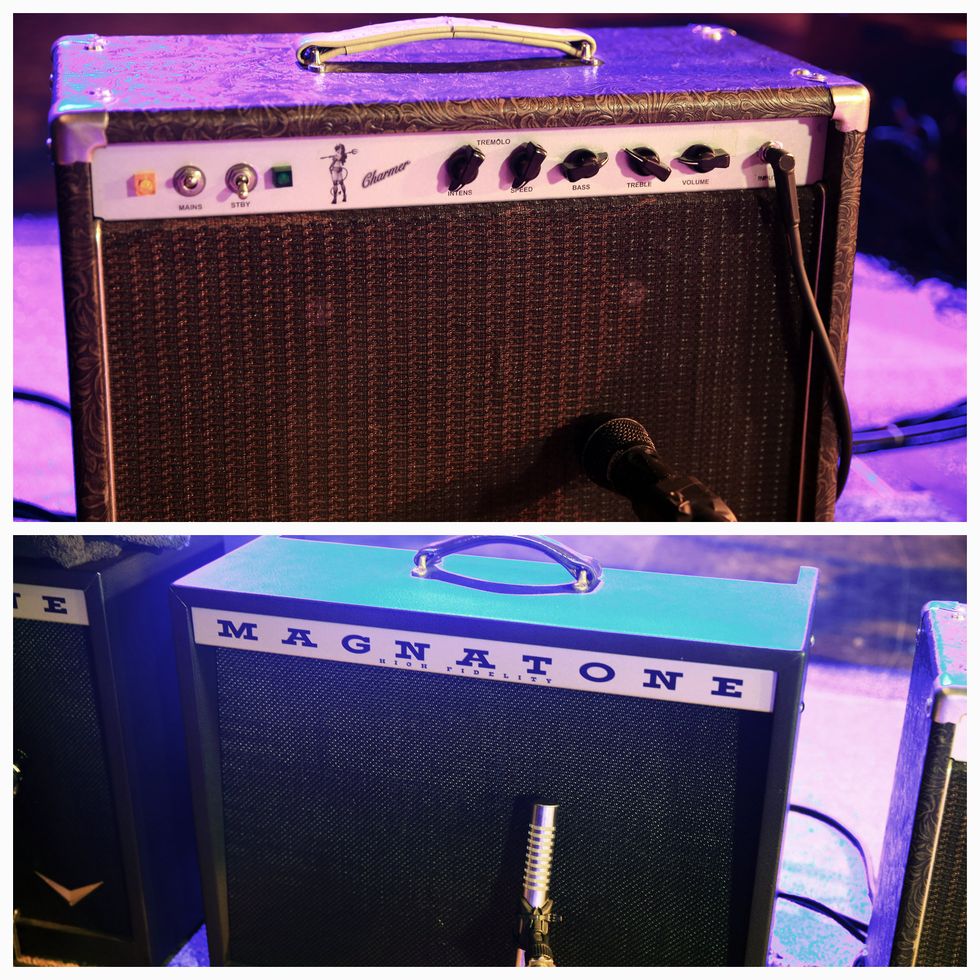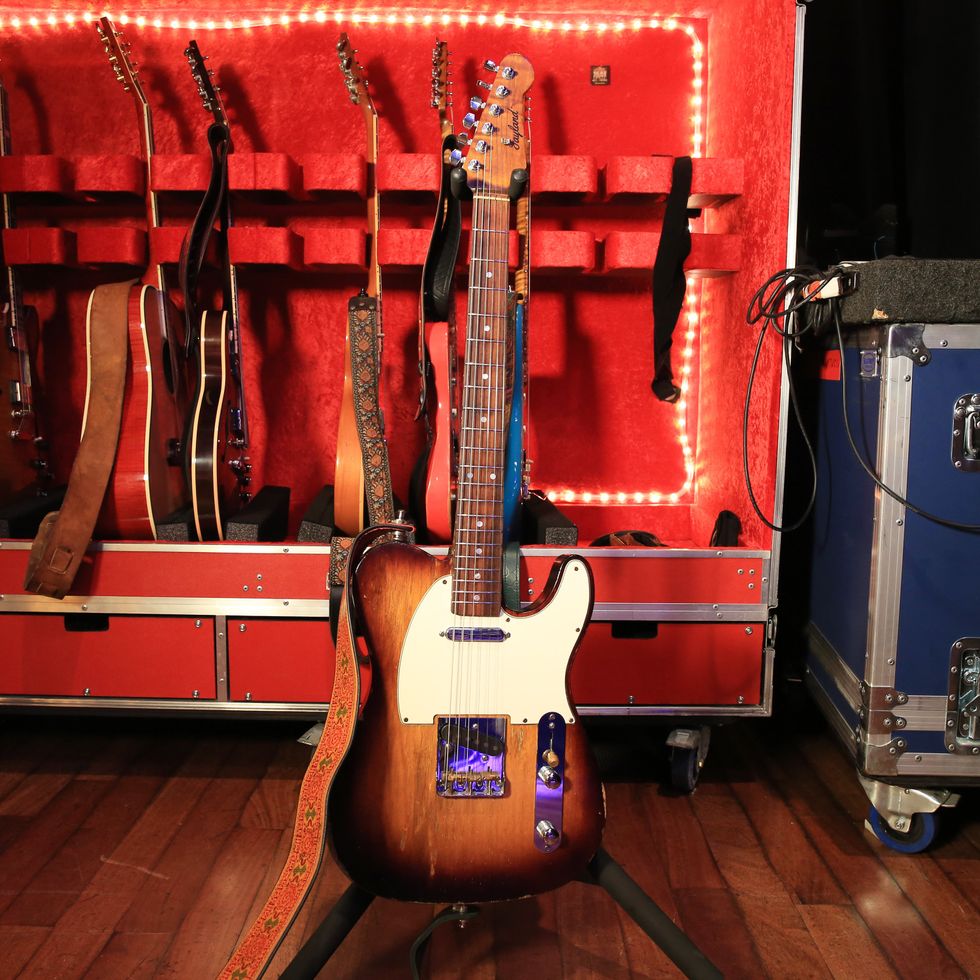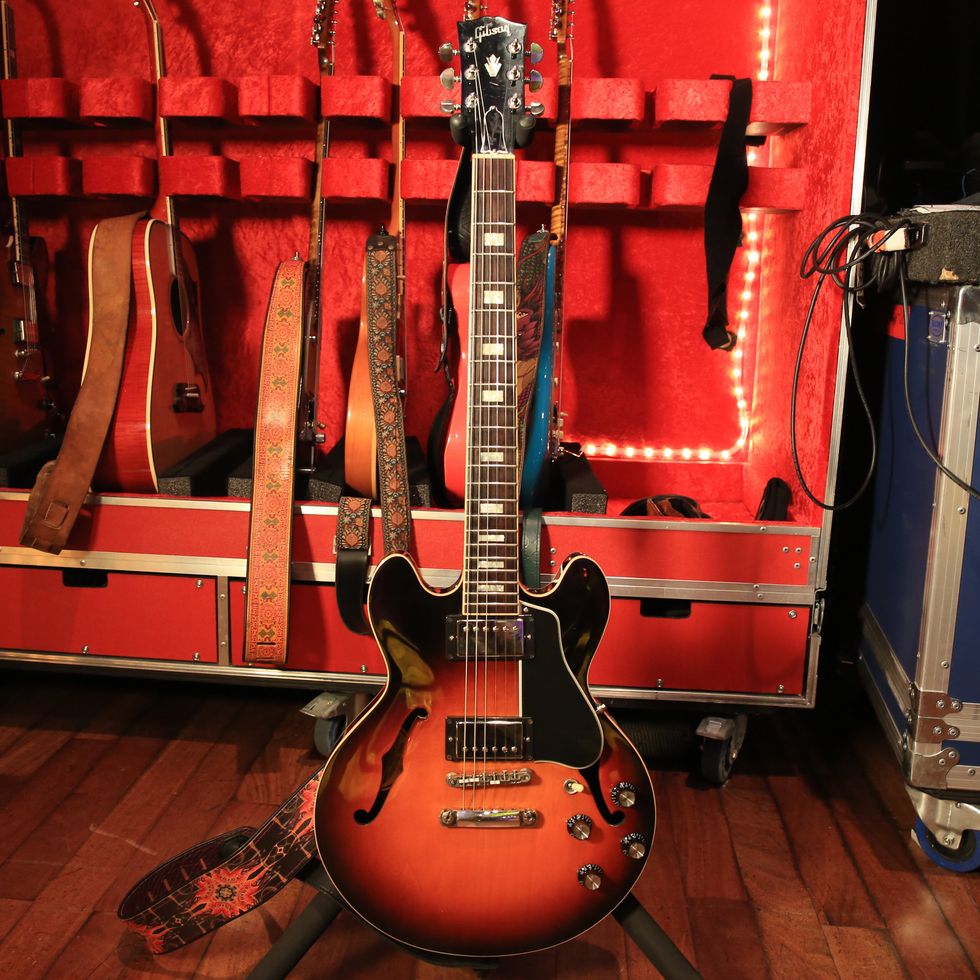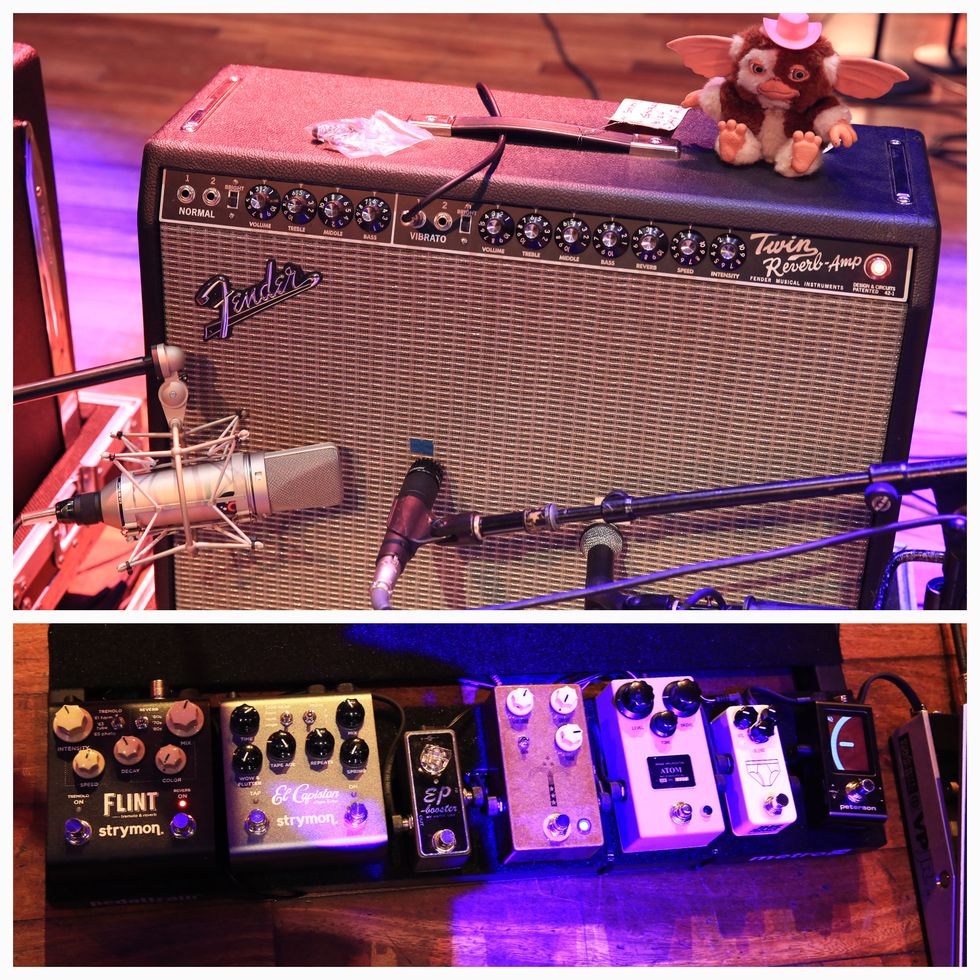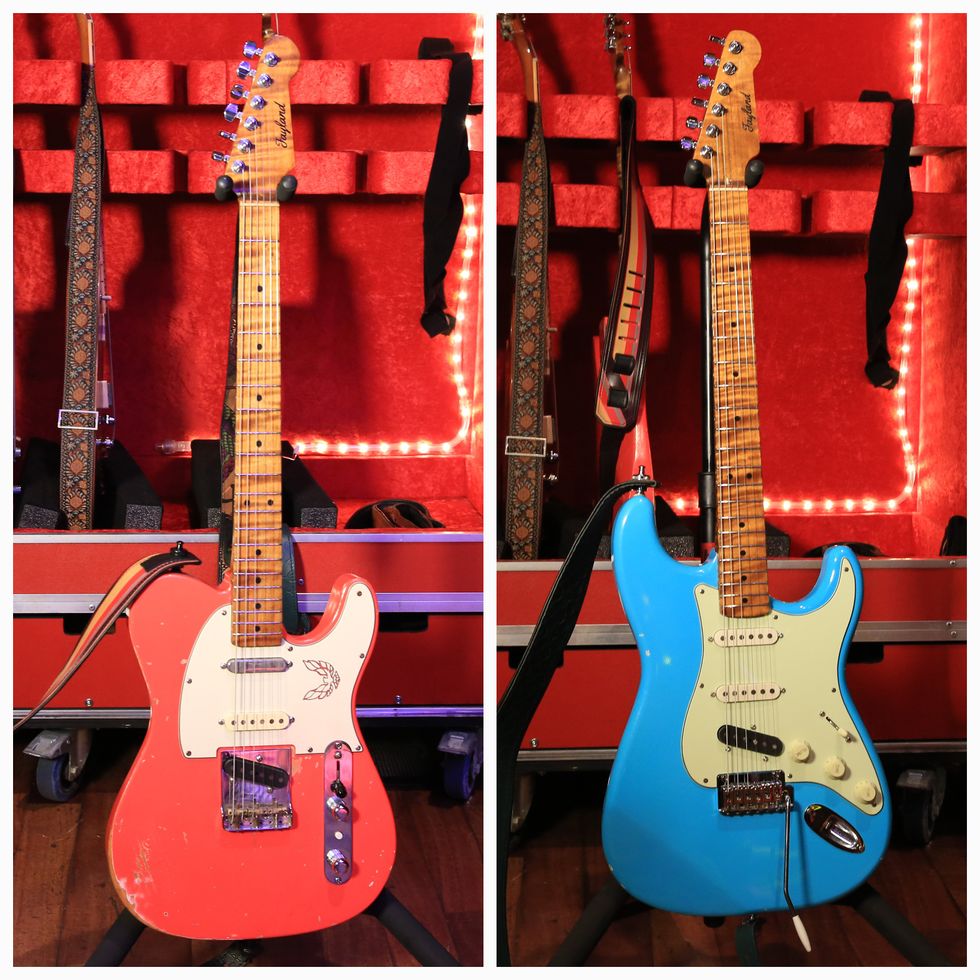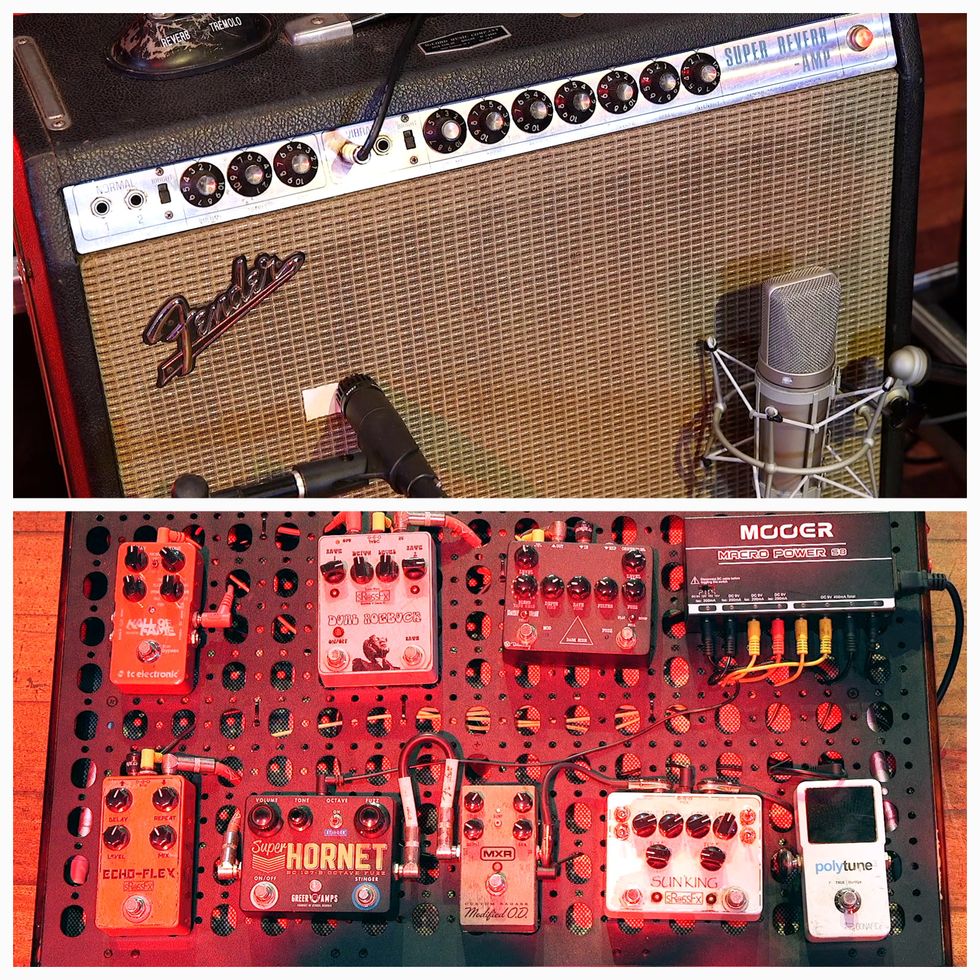The first thing most guitarists think of when they hear the phrase “hybrid picking” is undoubtedly twangy Telecasters. While that may be the most common use of hybrid picking, it is far from the only application. Diving into hybrid picking opens a whole new world of control, timbre possibilities, ideas, speed, and more.
As beginning guitarists start to move into the intermediate level, they typically build speed by practicing alternate or economy picking. It makes complete sense–especially to someone who’s new to the journey–that if you’re holding a pick, that’s what you should strike the strings with. I grew up learning how to play taking a slightly different route. Personally, I found it easier to be faster–and cleaner–to hybrid pick phrases, lines, and solos. It clicked with me and therefore was the technique I homed in on when growing from a beginner to an intermediate player. My alternate and economy techniques still aren’t as comfortable as hybrid picking, so here are some ideas from a guy that learned things from a bit of a different perspective. If you feel like your playing has plateaued, this might help you to keep climbing.
Small note: I use the pad of my fingers when hybrid picking and not the nail.
Step 1: Focus on the Small Differences
In Ex. 1 you’ll find what I consider to be one of the main benefits of getting comfortable with hybrid picking. I pick every note of the phrase on the first pass, but hybrid pick it on the second. On the second pass, the root note (open 4th string) is the only note the pick hits. I generally like to approach hybrid picking with an “each finger is assigned a string” method, meaning in this example the middle finger picks the note on the 3rd string and the ring finger picks the note on the 2nd string. Listening to the same two phrases played differently, you’ll note that there’s a tad more feel and nuance the second time through. These are subtle but can make all the difference in the world when it comes to creating, playing, recording, or performing parts. The combination of a mountain’s worth of small differences like this are what sets the pros apart!
Step 2: How to Play Chords with Hybrid Picking
Ex. 2 is how I love to use hybrid picking when comping. In this example the pick is handling everything on the 5th string while the middle finger picks the 4th string, the ring finger picks the 3rd string, and the pinky picks the 2nd string. Not only does hybrid picking this groove allow for a ton of control, it allows the pick to rhythmically separate from the rest of the fingers, creating a faux bassline. Again, using the middle, ring, and pinky fingers give a softer touch to the upper end of the chords, creating a more nuanced feel.
Step 3: Time to Go Low
Taking the idea of the pick handling the low end of the chords and giving the notes focus while the fingers contribute to clarity and softness on the upper end of the chords, we get Ex. 3. The pick only strikes the 6th string, while the middle finger picks the 3rd string, and the ring finger picks the 2nd string. This example of hybrid picking is widely used by guys like John Mayer and allows a player to have a ridiculous amount of control over what strings are being struck when playing something clean such as this.
Step 4: Let’s Get Sweeping
Applying this concept to lead playing, Ex. 4 replaces what would typically be an upward sweep with hybrid picking. The pick strikes the A note on the 7th fret of the 4th string. Then, the middle finger picks the C# on the 6th fret of the 3rd string, the ring finger picks the E note on the 5th fret of the 2nd string, and the pick strikes the F# on the 7th fret of the 2nd string. This is followed by a downward sweep of the same notes in reverse order. To end the lick, I pick the open 4th string. That’s when hybrid picking allows me to play a rolled Dmaj7 chord. These two embellishments are highly useful when both soloing and comping, and once again are a small touch that provides some “spice.”
Step 5: Enough with the Clean Stuff
Ex. 5 is a lick I use (I should probably say abuse) consistently. My sweep picking skills are abysmal. In part because I haven’t dedicated the appropriate time to practice them, but also partly because I tend to hybrid pick as a cheat or workaround. The lick is based on a G major arpeggio beginning at the 10th fret of the 5th string. I then pick the 4th string with my middle finger and the 3rd string with my ring finger. From there, I gather for a few notes with the pick on the 3rd string and repeat the pattern again across the fretboard. However, the second hybrid-picked part of the lick begins by striking the 9th fret of the 3rd string with the pick, then using my middle finger to pick the 8th fret of the 2nd string and my ring finger to pick the 7th fret of the 1st string. To end the arpeggio, I strike the 10th fret of the 1st string with the pick. The last bit of the phrase is a garden variety blues lick ending.
Hybrid picking is an extremely valuable tool that I think every guitar player should have in their arsenal. A player can have more control, feel, and timbral options compared to only using a plectrum, and it’s an easier way to add velocity with very minimal right-hand movement or tension. Try hybrid picking different grooves, licks, arpeggiated chord shapes, and even pieces of lead lines you already know to begin exploring how the technique can work for you.




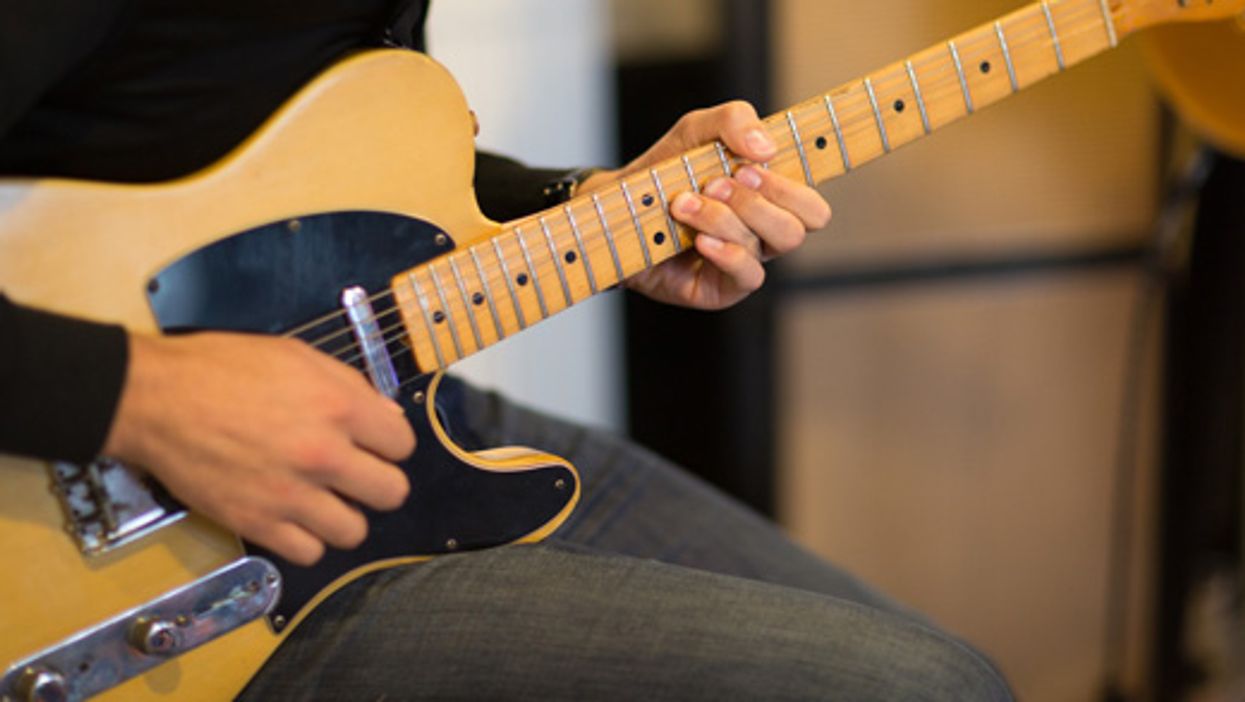

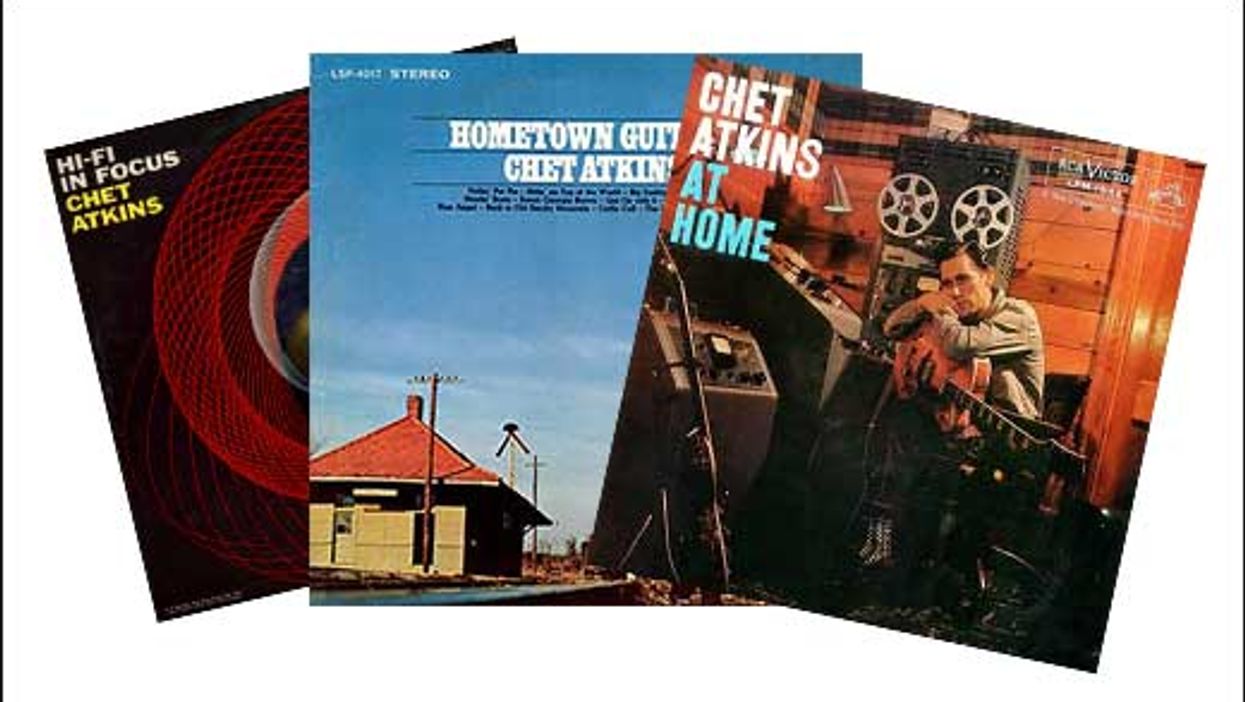



![Rig Rundown: Russian Circles’ Mike Sullivan [2025]](https://www.premierguitar.com/media-library/youtube.jpg?id=62303631&width=1245&height=700&quality=70&coordinates=0%2C0%2C0%2C0)




